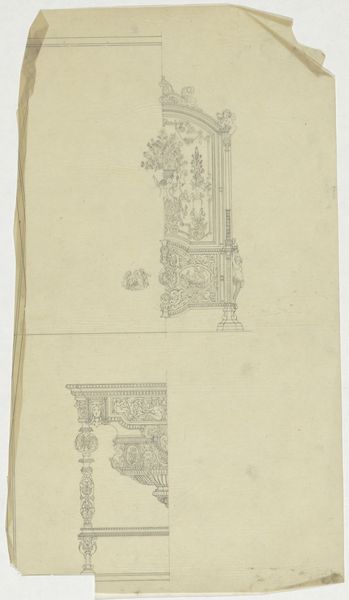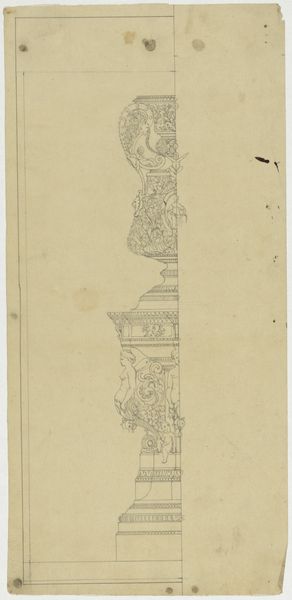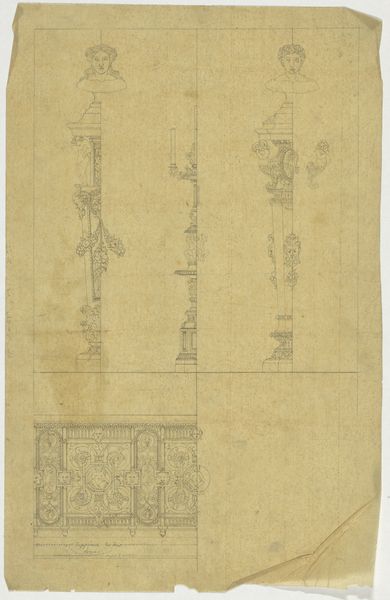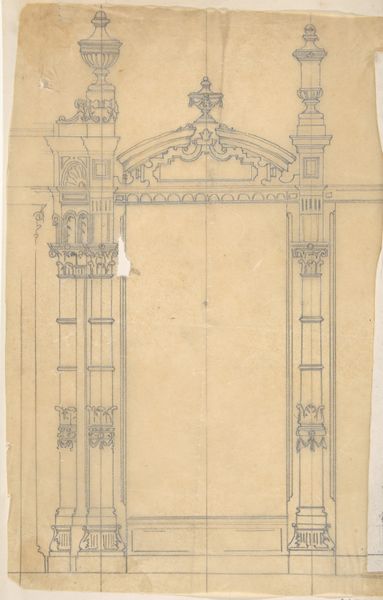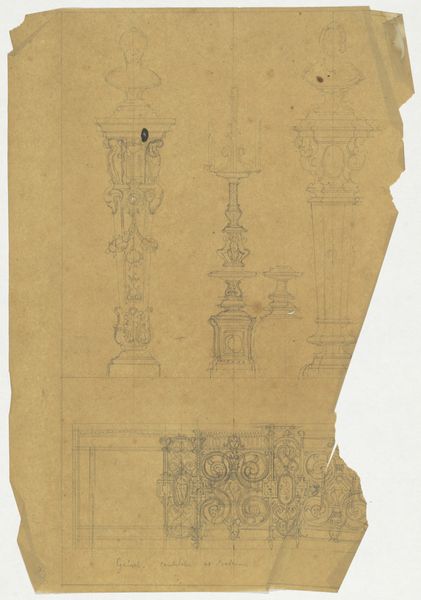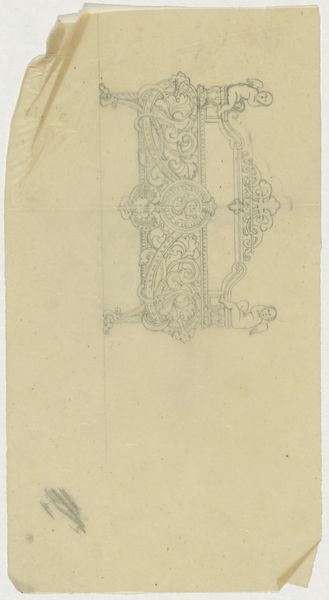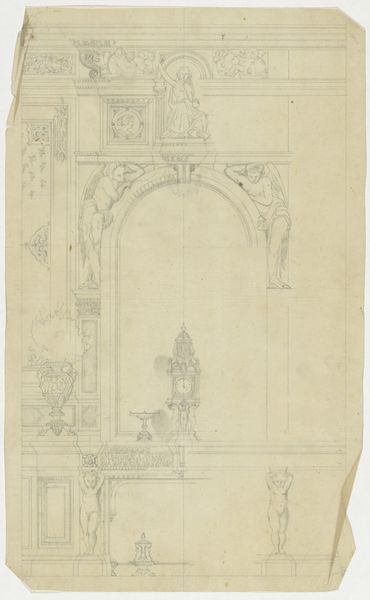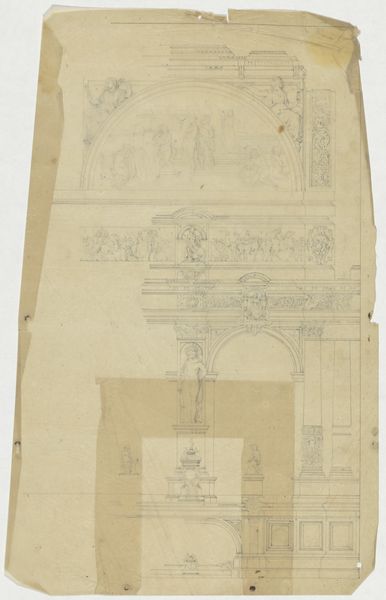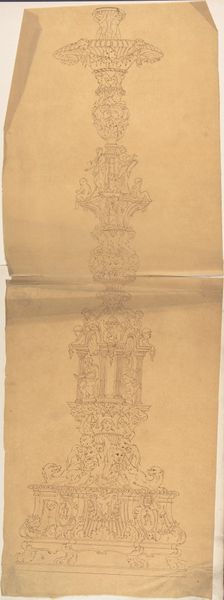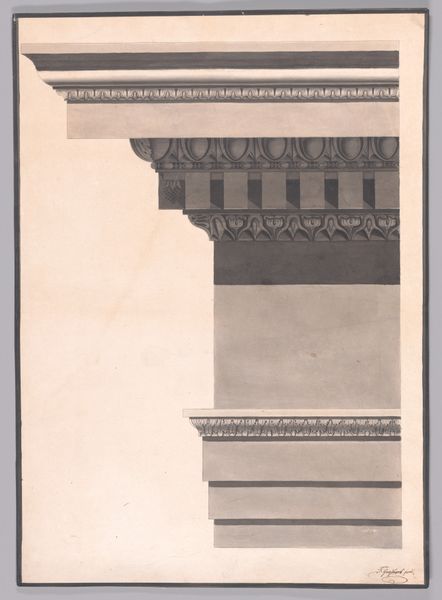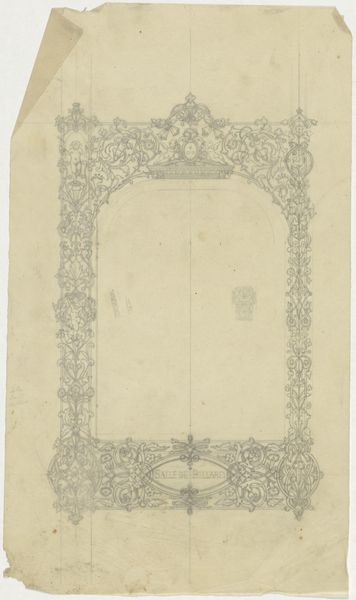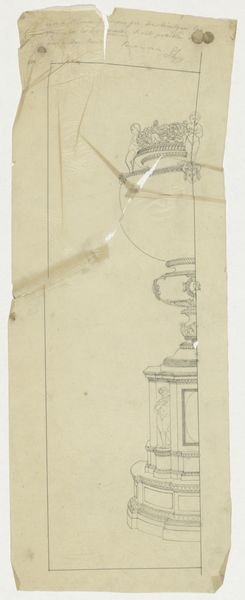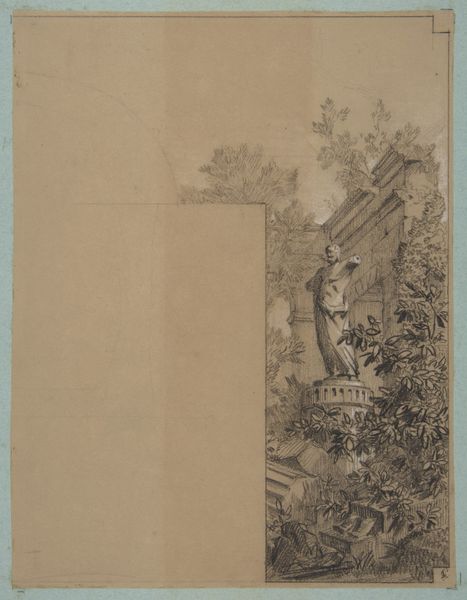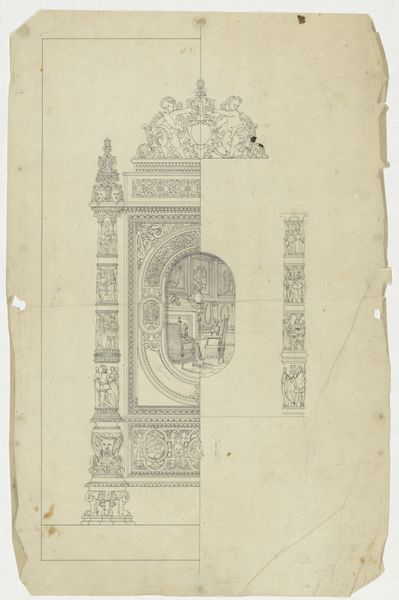
drawing, paper, pencil
#
drawing
#
pencil sketch
#
landscape
#
paper
#
pencil
Dimensions: height 155 mm, width 356 mm
Copyright: Rijks Museum: Open Domain
Editor: Here we have Firma Feuchère's "Tafelfontein," a pencil drawing on paper estimated between 1830 and 1850. The detail is amazing; it's like looking at an architect's meticulous plan. What strikes you most about this drawing? Curator: The means of production are primary. This pencil sketch, likely a preliminary design, reveals a great deal about labor practices. We see evidence of planning, revision. Think about the material cost: paper was relatively precious at the time, suggesting an investment in this design, for a wealthy patron perhaps. What sort of labor would ultimately bring this object to fruition if it were realized in another media? Editor: It's true. I didn't really consider the preciousness of paper then, versus now. It makes you think about the value placed on architectural design. The work to turn a sketch into reality is immense. Curator: Exactly. Look closely at the fountain depicted. Its various layers and sculptural components require expertise and resources across many stages: quarrying, carving, plumbing, etc. How does this drawing blur the boundaries between high art, which we traditionally think of as autonomous creation, and craft? Editor: It makes you realize how intertwined they are. There's an artistic vision here, certainly, but it's also utterly dependent on craftspeople to bring it to life. Without their skill and labor, this design remains just an idea on paper. So it raises questions about where artistic authorship really lies. Curator: Precisely! Considering the context and modes of production enables a richer reading of works like this. Editor: I never really considered that artistic authorship could be such a collaborative endeavor, with this much reliance on varied manual labor.
Comments
No comments
Be the first to comment and join the conversation on the ultimate creative platform.
